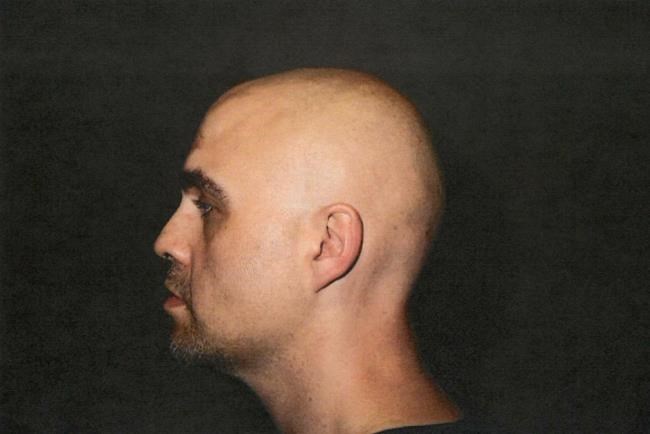WINNIPEG — The trial of serial killer Jeremy Skibicki heard Thursday that police found physical evidence of the victims in his Winnipeg apartment, including jewelry, clothing, DNA and a bloodstained bathtub.
Const. Jan de Vries, who was part of the police search team, testified they found bloodstains in Skibicki's bathroom belonging to one of the victims, Rebecca Contois.
Some stains were visible while others were found using a spray that makes stains fluorescent when used with a black light, he said.
"The bathtub was very fluorescent," said de Vries. "So was the floor, the walls and on the exterior side of the door."
He said the bloodstains found in the bathtub covered the entire area, which had likely been emptied and rinsed at some point.
Skibicki is charged with first-degree murder for the 2022 killings of Contois, Morgan Harris, Marcedes Myran and an unidentified woman Indigenous leaders have named Mashkode Bizhiki'ikwe, or Buffalo Woman.
He has confessed to the slayings, but his lawyers are arguing that he's not criminally responsible due to mental illness.
The Crown said the killings were racially motivated, with Skibicki a self-proclaimed white supremacist and the four victims Indigenous.
Prosecutors said Skibicki preyed on the vulnerable women at homeless shelters, assaulted them, killed them and disposed of their bodies in garbage bins.
GRAPHIC WARNING: The following details may disturb some readers.
The partial remains of Contois were found in multiple dumpsters in Skibicki’s neighbourhood, as well as in a local landfill.
Crown prosecutor Renee Lagimodiere has told court Skibicki assaulted 24-year-old Contois during sex. He then choked her, smothered her with a pillow and dismembered her in the tub.
Images from surveillance video presented in court show a person emptying bags into a bin in the neighbourhood.
Court heard that when officers went to search the bin, it had already been emptied. This led police to section off an area at the Brady Road landfill, where they ultimately found the woman's torso, said de Vries.
De Vries said that in Skibicki’s suite, police found a jacket and tuque belonging to Harris and Myran's earrings and baseball cap. DNA belonging to both women was also found, as was Myran's blood on the blade of a combat-style knife.
The remains of Harris and Myran are believed to be in a different landfill.
Investigators have said it's not known where the remains of Buffalo Woman are located.
Skibicki told police he sold Buffalo Woman's jacket online. Police later located the reversible Baby Phat jacket, and an unidentified woman's DNA profile was found.
De Vries testified there have been substantial but unsuccessful efforts to identify that DNA.
Court heard DNA evidence from 16 females was found in the apartment and in a garbage bin in the area. Nine of those samples were unidentified.
Lagimodiere told reporters outside court that the Crown doesn't believe at this time there are more victims in the case.
One identified DNA sample belonged to a missing woman. Ashlee Shingoose was last seen in downtown Winnipeg in March 2022.
Shingoose's family told local media last year that they were asked to provide a DNA sample to police but it didn't come back as a match to Buffalo Woman.
Police said in an email Thursday that Shingoose is still considered missing.
The federal government has a support line for those affected by the issue of missing and murdered Indigenous women and girls: 1-844-413-6649. The Hope for Wellness Helpline, with support in Cree, Ojibway and Inuktitut, is also available to all Indigenous people in Canada: 1-855-242-3310.
This report by The Canadian Press was first published May 9, 2024.
Brittany Hobson, The Canadian Press




